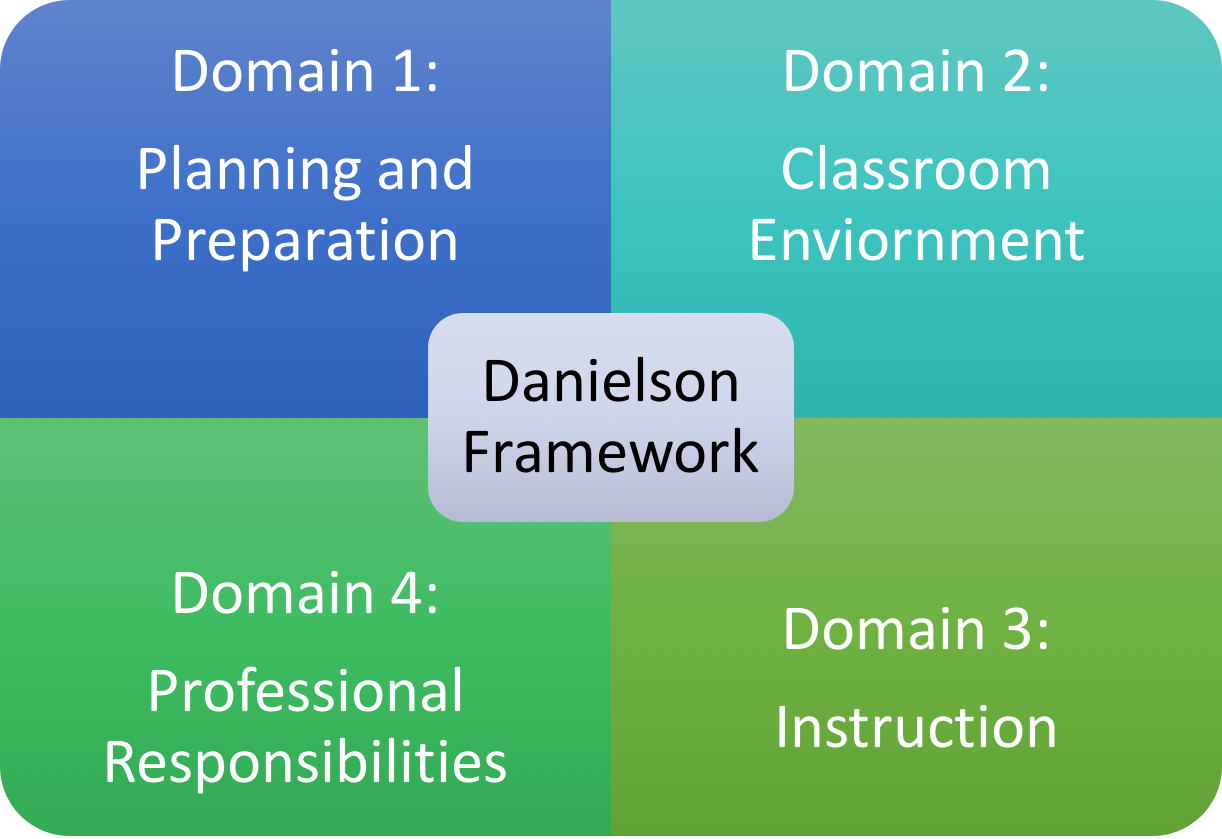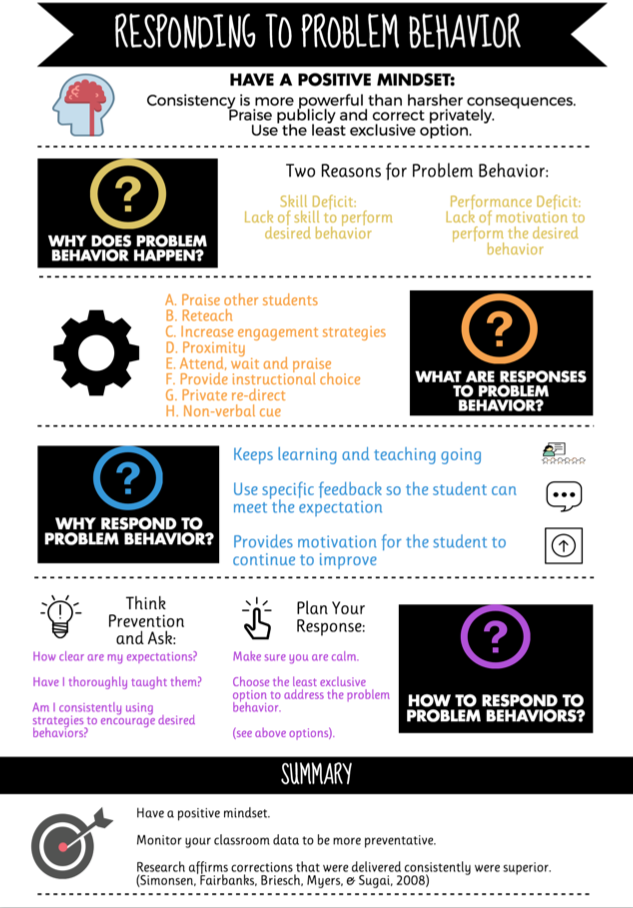Effective Classroom Practices
Responding to Problem Behavior
Use an instructional approach when students make behavioral errors similar to when they make academic errors
"Respond to problem behavior the same way you would an academic error: Re-teach and provide feedback." ~Brandi Simonsen
This video shows a high school example of efficiently and effectively responding to inappropriate behavior.
Listen to this narrated slideshow to learn more about responding to problem behavior.
Connection to Appraisal

Danielson Framework
- Standards of conduct have been established and implemented successfully. (2d)
- The teacher frequently monitors student behavior (2d)
- Preventive action when needed by the teacher (2d)
- Teacher awareness of student conduct (2d)
- The teacher’s response to student misbehavior is effective (2d)
- Politeness and encouragement (2a)
- Fairness (2a)
Strategies to Try:
- Reflect on prevention, increase prevention strategies prior to responding
- How clear are my expectations?
- Have I thoroughly taught my expectations?
- Have I utilized high rates of positive feedback?
- Review and re-teach expectations to reduce responding
- Practice private re-directs (ensure privacy)
- Plan a specific response to get positive student outcome based on the function of behavior
- Develop a routine/process for responding that utilizes multiple effective response strategies
- Video tape instruction, reflect on response strategies used, demeanor when responding and plan for improvement
- Reflect on response strategies to ensure they maintain positive relationships and repair harm
- Develop a neutralizing routine to utilize prior to responding (slow down decision making)
- Ask a coach or colleague to observe and give feedback
- Observe a colleague’s classroom and reflect on practice
